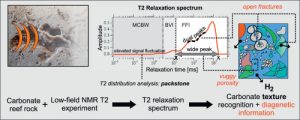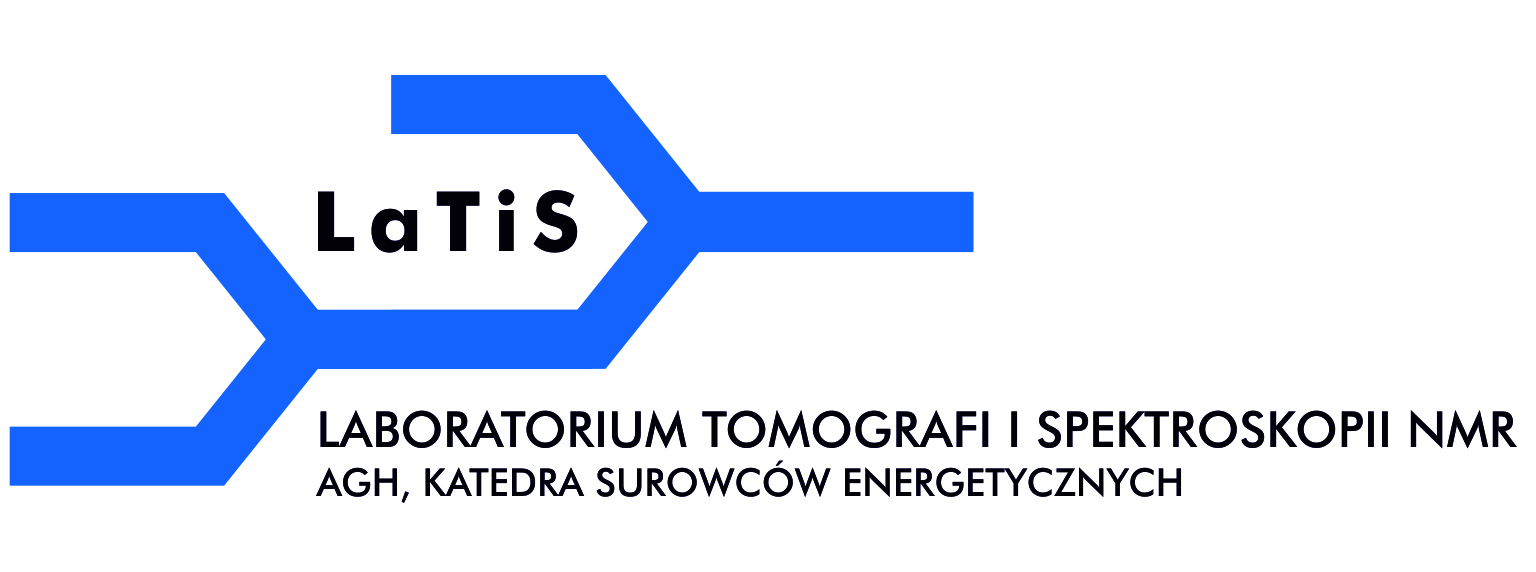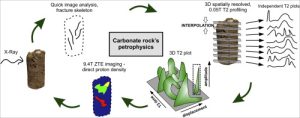Research offer
NMR scanners are used to study <strong>the amount and type of water and / or hydrocarbons present in various types of objects, including rock pores and biological systems. The object of research may be a core plug sample (typically 1″ wide nad 1.5″ high), soil samples, fruits, vegetables, plants, seeds, small animals, tissues, pharmaceuticals, chemicals or food. The size of the examined objects should not exceed 5 cm in diameter and 10 cm in length for 1D experiments at 2MHz resonance frequency for 1H, which in the case of rock samples measurements corresponds closely to the frequency of NMR well-logging experiments. However, 2D and 3D tomography measurements can be carried out for objects with a diameter of up to 6 cm at a 24 MHz resonant frequency
Laboratory measurement capabilities
The following parameters are determined in 1D, 2D and 3D experiments:
- Porosity and its distribution (PSD – Pore Size Distribution) measured with the minimum echo time TE = 40 us,
- Free and bound water content indices: FFI, BVI, CBW, cut-off times (T2 Cutoffs)
- Types of liquids filling the pore space – generation of 2D maps (after 1D and 2D Laplace transform), relaxation time schedules T1, T2 and diffusion coefficient D: D-T2, T2-T1, T2-T2, also in the spatial version (Spatially resolved T2),
- Saturation profiles and spatial pore distribution profiles,
- Permeability – determined from the pore distribution,
- Capillary pressure with pore constraints.
- Measurement of <strong>profiles, relaxation times <strong>T1, T2 and diffusion coefficients in the presence of <strong>high gradients (22T / m) with a resolution of 10μm (NMR-MOUSE).
- Measurement of profiles, relaxation times T1, T2 and diffusion coefficients under <strong>overload conditions (up to 6000 Psi) (RCA-2MHz).
- 1D-3D<strong> Tomography with SE, SE-DWI, RARE, EPI, SPI, SPRITE (24MHz) sequences.
- Innovative textural, diagenetic and petrophysical approaches, including:
Own methodology enabling carbonate facies recognition and dissolution vugs’ detection using pore space components and T2 relaxation time specifics.
 Own workflow joining the microtomography and NMR data together, allowing for narrow channel porosity to be captured and characterized.
Own workflow joining the microtomography and NMR data together, allowing for narrow channel porosity to be captured and characterized.
We invite you to contact us and cooperate


